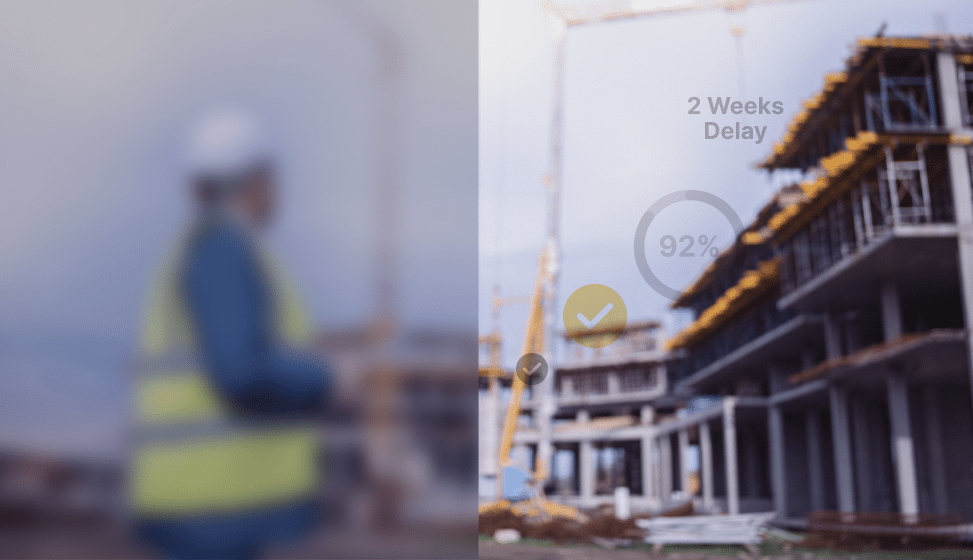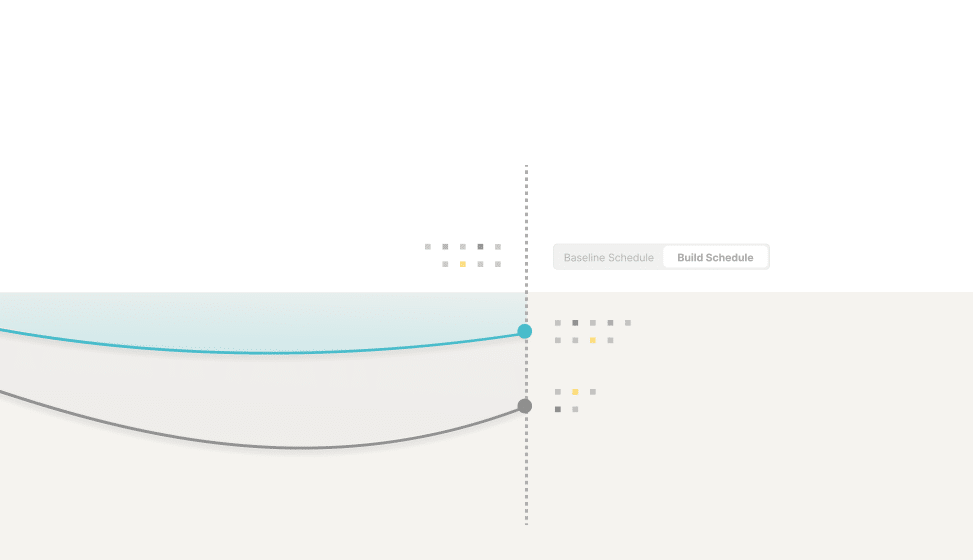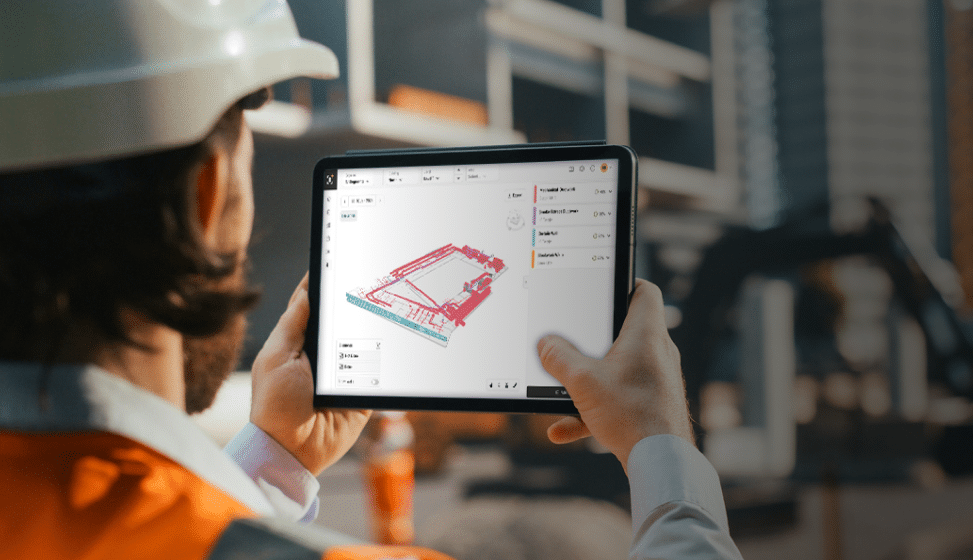Lean Construction: Three ways data can help you supercharge project flow
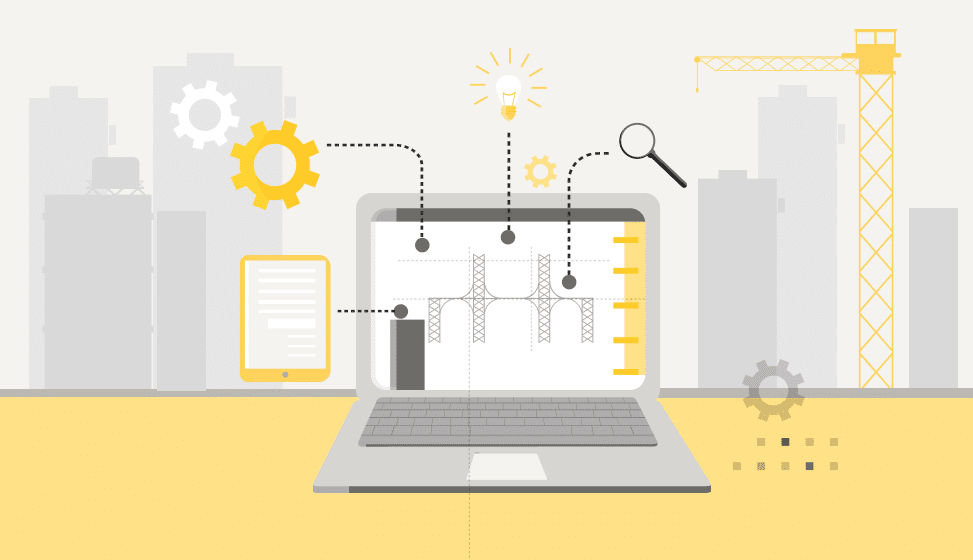
If you’re involved in construction delivery, you know how difficult it is to keep projects moving smoothly. Despite the widespread adoption of Lean Construction principles, the challenge of translating good intentions into consistent outcomes persists.
I’ve spent over a decade working in the construction industry, from boots-on-the-ground project management to my current role at Buildots. Recently, I had the opportunity to moderate a panel discussion hosted by the Lean Construction Institute (LCI), where we delved into an ongoing pain point – achieving reliable project flow.
During our session, I was joined by a standout group of industry leaders: Matt Davis (Superintendent, Pomerleau), Sajjad Siraty (General Manager, LCG Residential), Ed Hansell (Vice President, LF Driscoll), and Elizabeth Taylor (National Lean Director, JE Dunn). We discussed how data and AI can strengthen Lean construction principles and make project flow a measurable outcome.

Here are three key takeaways from that conversation, with practical insights from the field.
1. Stop guessing, start measuring
“It’s really about being more proactive with that data… leaning into what it’s telling us.” – Sajjad Siraty
At the start of our webinar, we asked the audience: what’s the biggest barrier to achieving reliable flow? The top response? Lack of accurate data (33%).
It’s not surprising. Most of us have experienced the frustration of making decisions without full visibility – relying on hunches, chasing updates, or reacting to problems only after they’ve already impacted our schedule. As Sajjad put it, the key is using the data you do have to anticipate what’s coming. When teams track progress consistently and measure performance using shared tools, they can act earlier and plan smarter.
Matt Davis made a similar point, emphasizing how field teams can get caught in a reactive loop without timely insights. “You show up to a job, and it’s not ready, or you’re getting blocked, and you don’t know why. The data helps you connect the dots before you’re standing still.”
Ed Hansell reinforced the importance of measuring the actual versus planned progress: “We’re trying to understand what’s really happening, not what we think is happening. That’s the shift.” That’s where data becomes a critical part of the Lean toolkit. Several panelists emphasized that without consistent performance measurement, it’s nearly impossible to understand whether your processes are actually working. It’s this ability to align actual progress with planned outcomes that allows teams to move from reactive decision-making to proactive control of the project flow.
2. Embrace new ways to visualize flow
When we talk about Lean planning, the concept of “flow” can feel abstract. What does it actually look like? And how do you spot when it’s breaking down?
One approach that came up several times during the webinar is Line of Balance (LoB). This visual tool allows teams to map out how work is progressing across zones and identify potential clashes between trades before they become delays. Ed Hansell discussed the impact of seeing the flow of work laid out: “You start seeing the pressure points, and that lets the superintendent have real conversations with the trades.”
Sajjad also shared how LoB changed the way they plan across projects: “We started using Line of Balance, and it helped us stop looking at things linearly. We now ask: what is the collective impact of our sequencing?”
Instead of just seeing a Gantt chart, LoB lets you visualize when and where two trades are about to collide and adjust before it becomes an issue.
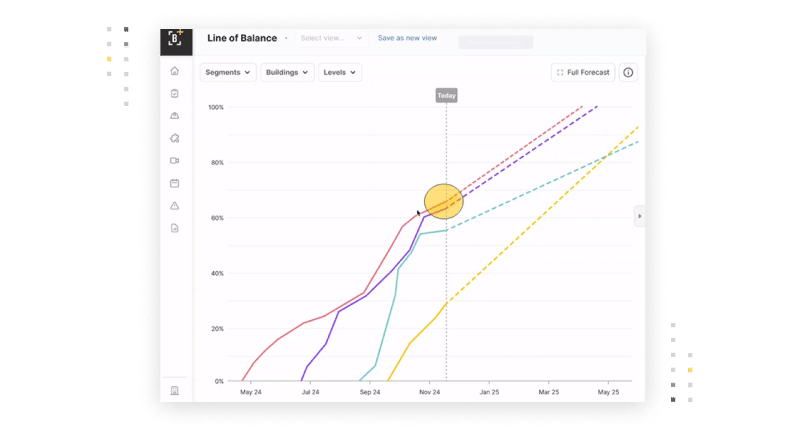
This isn’t about adopting new tools for the sake of it. It’s about giving teams practical insight they can use onsite. As Elizabeth Taylor mentioned during our conversation, visual planning isn’t just for the PMs – field teams need to be part of the conversation so they can course-correct in the moment.
3. Glimpse the future with Predictive Analytics
“Training ensures people know what to look for. Data gives them the confidence to act on it.” – Matt Davis
Matt brought a real field-based perspective to the table, and he’s right. Construction will always have variables we can’t fully control: weather, permits, client changes, etc. But many of the delays we face come from operational inefficiencies that are within our control.
According to the data, over 50% of delays are avoidable. That’s where predictive analytics comes in. By analyzing past patterns of work and tracking trade performance, teams can forecast where they’re likely to fall behind and take action before things go sideways.
Ed Hansell pointed out how even subtle indicators can become predictive tools: “When we look at the sequence deviation over time, we start spotting early warning signs two weeks before anyone flags them on-site.”
Elizabeth Taylor added to this by emphasizing that tools alone aren’t enough – training and empowerment are key: “Making sure that we are training our people to set them up for success… that goes back to being part of Lean culture and respect for people. It’s about giving them the tools and resources they need to be successful, and not just layering on more things to make their jobs more complex.”
Lean Construction management: The path forward
Lean construction principles aren’t going anywhere, but how we execute it has to evolve. That’s where data makes the difference. AI gives us the visibility we need to execute Lean effectively on-site.
Whether it’s visualizing flow with Line of Balance, surfacing patterns through predictive insights, or simply giving your team the confidence to move from gut feel to measurable action, we now have tools to build Lean Construction into the everyday.
The future isn’t just about building smarter. It’s about planning, flowing, and delivering smarter.
Want to learn more about how to integrate AI into Lean Construction management? Check out this whitepaper.

